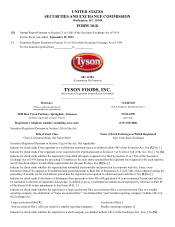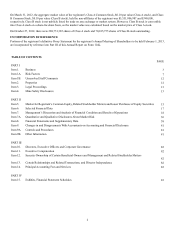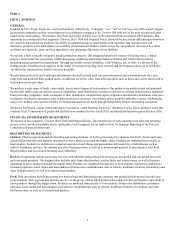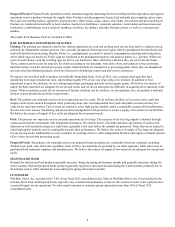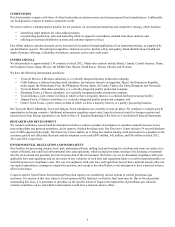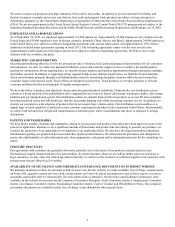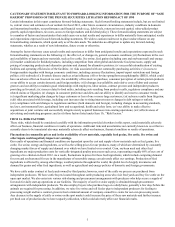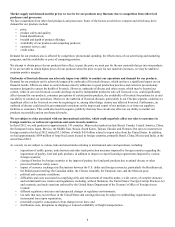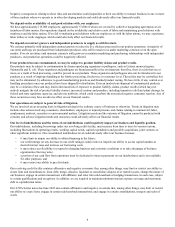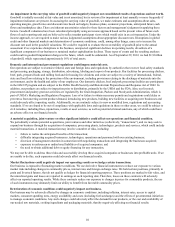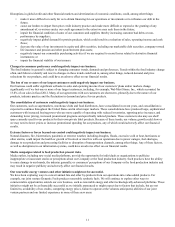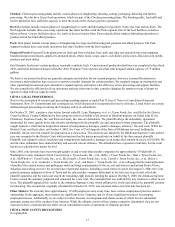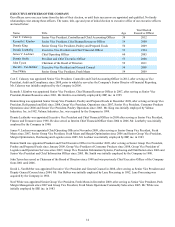Tyson Foods 2012 Annual Report Download - page 5
Download and view the complete annual report
Please find page 5 of the 2012 Tyson Foods annual report below. You can navigate through the pages in the report by either clicking on the pages listed below, or by using the keyword search tool below to find specific information within the annual report.5
COMPETITION
Our food products compete with those of other food producers and processors and certain prepared food manufacturers. Additionally,
our food products compete in markets around the world.
We seek to achieve a leading market position for our products via our principal marketing and competitive strategy, which includes:
• identifying target markets for value-added products;
• concentrating production, sales and marketing efforts to appeal to and enhance demand from those markets; and
• utilizing our national distribution systems and customer support services.
Past efforts indicate customer demand can be increased and sustained through application of our marketing strategy, as supported by
our distribution systems. The principal competitive elements are price, product safety and quality, brand identification, breadth and
depth of product offerings, availability of products, customer service and credit terms.
INTERNATIONAL
We sold products to approximately 130 countries in fiscal 2012. Major sales markets include Brazil, Canada, Central America, China,
the European Union, Japan, Mexico, the Middle East, Russia, South Korea, Taiwan, Ukraine and Vietnam.
We have the following international operations:
• Tyson de Mexico, a Mexican subsidiary, is a vertically-integrated poultry production company;
• Cobb-Vantress, a chicken breeding stock subsidiary, has business interests in Argentina, Brazil, the Dominican Republic,
India, Japan, the Netherlands, Peru, the Philippines, Russia, Spain, Sri Lanka, Turkey, the United Kingdom and Venezuela;
• Tyson do Brazil, a Brazilian subsidiary, is a vertically-integrated poultry production company;
• Shandong Tyson, a Chinese subsidiary, is a vertically-integrated poultry production company;
• Tyson Dalong, a joint venture in China in which we have a majority interest, is a chicken further processing facility;
• Jiangsu-Tyson, a Chinese subsidiary, is a vertically-integrated poultry production company; and
• Godrej Tyson Foods, a joint venture in India in which we have a majority interest, is a poultry processing business.
Our Tyson do Brazil, Shandong Tyson and Jiangsu-Tyson subsidiaries are currently in start-up phase. We continue to evaluate growth
opportunities in foreign countries. Additional information regarding export sales, long-lived assets located in foreign countries and
income (loss) from foreign operations is set forth in Note 16: Segment Reporting of the Notes to Consolidated Financial Statements.
RESEARCH AND DEVELOPMENT
We conduct continuous research and development activities to improve product development, to automate manual processes in our
processing plants and growout operations, and to improve chicken breeding stock. Our Discovery Center includes 19 research kitchens
and a USDA-inspected pilot plant. The Discovery Center enables us to bring new market-leading retail and foodservice products to the
customer quickly and efficiently. Research and development costs totaled $43 million, $42 million, and $38 million in fiscal 2012,
2011 and 2010, respectively.
ENVIRONMENTAL REGULATION AND FOOD SAFETY
Our facilities for processing chicken, beef, pork and prepared foods, milling feed and housing live chickens and swine are subject to a
variety of federal, state and local environmental laws and regulations, which include provisions relating to the discharge of materials
into the environment and generally provide for protection of the environment. We believe we are in substantial compliance with such
applicable laws and regulations and are not aware of any violations of such laws and regulations likely to result in material penalties or
material increases in compliance costs. The cost of compliance with such laws and regulations has not had a material adverse effect on
our capital expenditures, earnings or competitive position, and except as described below, is not anticipated to have a material adverse
effect in the future.
Congress and the United States Environmental Protection Agency are considering various options to control greenhouse gas
emissions. It is unclear at this time when or if such options will be finalized, or what the final form may be. Due to the uncertainty
surrounding this issue, it is premature to speculate on the specific nature of impacts that imposition of greenhouse gas emission
controls would have on us, and whether such impacts would have a material adverse effect.

